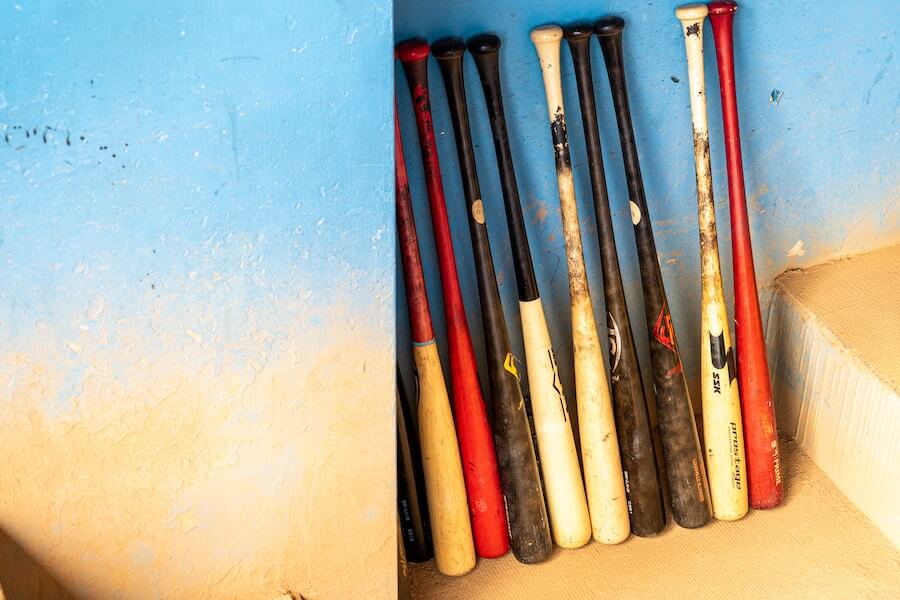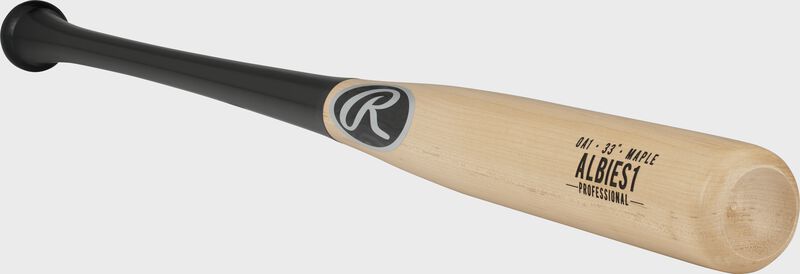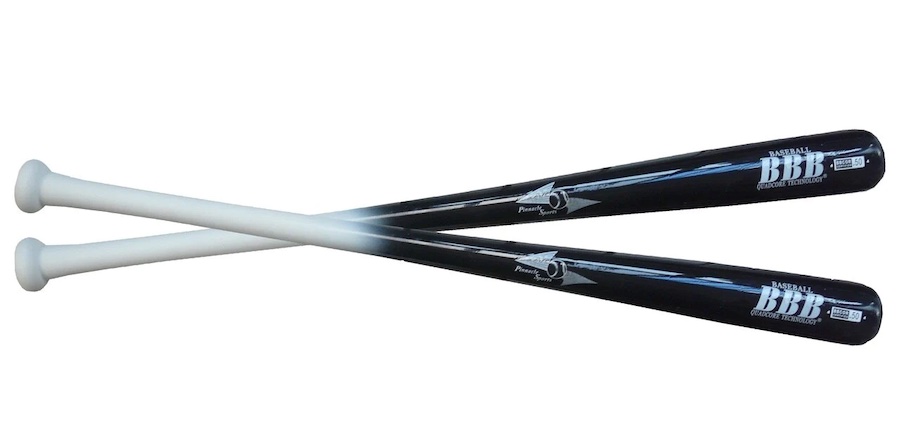The baseball bat can significantly impact a player’s performance, including swing speed, power, and overall experience. Thus, in baseball, choosing the right bat is crucial for all players at all levels.

Among the various baseball bats available in the market, the two most commonly used are Bamboo and Maple.
While Bamboo bats are famous for their light weight, strength, and exceptional durability, the Maple bats have been long favored by players due to their density, hardness, and excellent balance.
This article will provide a comprehensive comparison of Bamboo and Maple bats.
From durability to flexibility and performance to price, we will analyze various factors to provide valuable insights to determine which bat suits you best.
So let’s dive into the world of Bamboo and Maple bats and discover which one reigns supreme.
Bamboo vs. Maple Bat – Comparison
Bats can significantly impact a player’s performance on the field. Thus making informed choices when opting for a baseball bat is necessary. Below is a detailed comparison of the two most commonly available bat types.
A brief introduction to Bamboo and Maple Bats
Bamboo bats are a popular alternative to traditional baseball bats. Bamboo is often referred to as grass rather than tree.
Thus these bats have their distinct qualities and advantages. Their manufacturing process involves pressing bamboo strips, later carved to make a bat.
Contrary to this, Maple bats are crafted from Maple trees. These bats are 20% more strong as compared to traditional Ashwood bats.
Maple wood is hard and dense; the harder the surface, the better it will jump.

Due to this reason, Maple bats have been popular among baseball players due to their dense and durable characteristics.
Length
Length is an important factor when choosing a baseball bat. The average length of a baseball bat varies from 28-34 inches.
However, the ideal length varies depending on the player’s personal preferences. The longer bat generally covers more area, thus providing more reach, while the shorter bats offer better control.
Maple and Bamboo bats are available in various lengths ranging from 28-34 inches. Both bats offer a satisfying experience when contact is made in the sweet spot.
However, in both bats, the location of the sweet spot varies depending on the length.
Weight
Weight is another crucial factor to consider when choosing a baseball bat. Depending on weight, generally, there are two types of baseball bats available.
Firstly, balanced bats have evenly distributed weight throughout the bat. Secondly, the end-loaded bats have a more weighted barrel.
While comparing Maple and Bamboo bats with reference to weight, there are a few key factors to consider. The Maple bats are available in both balanced and end-loaded types.
Generally, they are heavier than Bamboo bats due to the denser nature of wood.
Maple bats are a good choice for players who prioritize power hitting as they allow more momentum and generate more power.
On the other hand, the bamboo bat is available only in balanced form. They are generally lightweight due to the natural properties of bamboo.
Due to their lightweight, these bats offer more control and are more suitable for players focusing on precise hitting and bat swing speed.
Barrel Diameter
The barrel diameter directly affects the availability of the sweet spot and the bat’s stability, thus an essential factor to consider when choosing a baseball bat.
According to USA Baseball, the average barrel diameter of a baseball bat varies from 2 -2 ⅝ inches.
Maple bats are available in different barrel diameters, but their standard barrel size is two ¼ inches. This offers more control of the bat but a small sweet spot.
Compared to this, the Bamboo bats also come in various barrel diameters, but their standard barrel size is two ⅝ inches.
Though these barrel sizes added weight to the bat due to bamboo’s generally lightweight properties, it did not significantly affect the stability of the swing speed of the bat.
Additionally, the large barrel diameter in Bamboo bats offers a big sweet spot, making it a better choice as a baseball bat depending barrel diameter.
Bamboo bats vs. Maple bats: Grip
The grip of a baseball bat affects the player’s control and comfort during the swing. Generally, the grips of baseball bats are made of leather or synthetic rubber.
However, this grip thickness can vary from bat to bat, depending on the player’s choices.
In the case of Bamboo bats, they offer a more natural grip. The bamboo has a natural grip texture. Thus, mostly, it does not feature additional grips.

However, if players are not comfortable with the natural grip, other grip options are available to explore.
Unlike the natural grip of Bamboo fabric, the Maple bats come with a diverse range of grip options. These grips are specially designed to offer more traction, reduced slippage, and enhanced comfortability.
Certifications for use in various leagues
Baseball Leagues worldwide have specific standards about baseball bats that must be met to be used in-game. These standards ensure that the bat fulfills all the safety and performance requirements.
Some more common certifications include USA Baseball, USSSA, and BBCOR.
Bamboo bats generally have fewer certifications as compared to Bamboo bats. These bats are primarily allowed in recreational leagues, but their use in professional leagues is still under debate.
Contrary to this, Maple bats come with various certifications. They are certified by USA Baseball, USSSA, and BBCOR.
However, their use in youth leagues may require additional certifications.
Flexibility and Vibrations
Considering flexibility and vibrations is important as these factors can significantly affect bat speed and power generation.
Bamboo bats have natural flex, which can help increase the bat’s performance. This flex promotes swing speed and generates more power due to its whip-like effect.
This flex also absorbs vibration produced by bat-ball contact, ultimately reducing chances of discomfort and hand sting.
On the other hand, Maple bats have less flex. Due to their stiff nature, they do not absorb energy and produce vibrations upon impact.
However, this limitation needs to be sufficiently addressed with the advancement in technology and design.
Durability and Longevity
Regarding durability and longevity, there are some differences to consider when comparing maple and bamboo bats.
Bamboo bats are renowned for their durability. Their manufacturing and natural strength of bamboo make these bats resistant to breaking. Bamboo bats can withstand more hits, resulting in extended longevity.
Maple bats are also known for their durability. While they may be more susceptible to breaking compared to bamboo bats, advancements in manufacturing techniques have improved their durability.
Additionally, proper bat care and regular inspections can help extend the lifespan of maple bats.
Price and availability
Depending on your budget, price is an important factor to consider.
Bamboo bats are typically priced in the mid to high range due to their unique manufacturing process and the durable properties of bamboo. Prices may vary depending on the brand, quality, and design features.
Maple bats are available in a wide price range, from affordable options to high-end professional-grade bats. The price can vary based on bat quality, manufacturer reputation, and bat design.
The Bottom Line
Choosing between Bamboo and Maple bat is indeed a difficult decision. Bamboo bats excel in durability, lightweight design, and natural flex, allowing faster swing speeds and more control over the bat.
Contrary to this, Maple bats are known for their hardness, density, and good balance.
Factors like length, weight, durability, and flexibility should be considered before choosing the bat. But ultimately, the choice lies within the player’s personal preference, hitting style, and budget.
Remember, the right bat can effectively help you boost your performance. Take time to evaluate, ask for guidance, and make informed decisions to reach your full potential as a baseball player.
Happy Swinging.

I was working as a mountain guide, probably all around the planet. One day, I met my wife in the mountains, literally on top of the world. Now, I have a beautiful family and three kids, so I don’t have much time for climbing, but sometimes I go camping with my friends. I am also into gym workouts, and I can’t imagine my life without sports.
Since I ended my professional career as a climbing guide, I’ve been giving personal classes and helping amateurs to get ready for conquering their first peaks. Also, that’s how the whole blog idea appeared.





